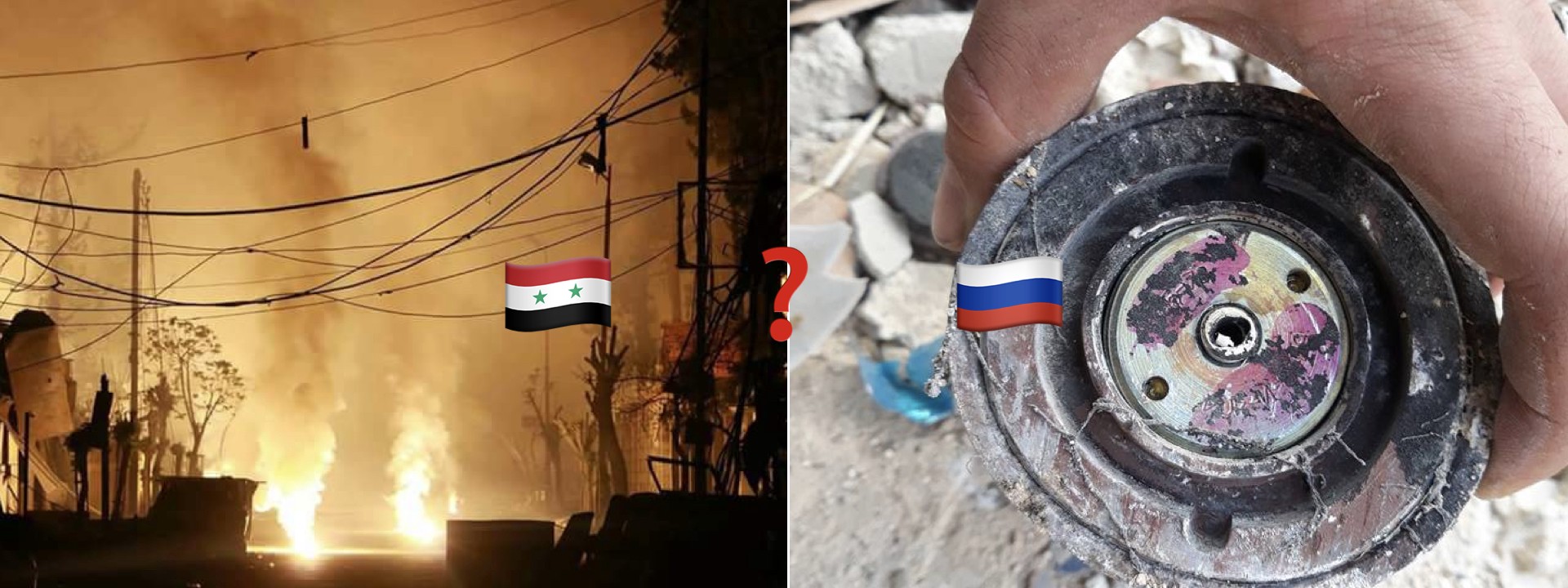#PutinAtWar: Rebels Burned Out of Eastern Ghouta
Latest developments in Eastern Ghouta and the use of incendiary munitions
#PutinAtWar: Rebels Burned Out of Eastern Ghouta

Latest developments in Eastern Ghouta and the use of incendiary munitions

Editor’s Note: This article includes graphic or violent imagery not suitable to all audiences.
The rebel position in Eastern Ghouta continues to deteriorate. According to various sources, at least 90 percent of Eastern Ghouta territory is already under control by Syrian regime forces. A final push of regime forces began on March 20 and ended with rebel forces pushed out of town of Harasta and negotiations of withdrawal from Irbin.
The Syrian Arab Army, under Bashar Al-Assad and supported by the Russians, is doing everything in its power to crush the resistance as quickly as possible, which included inhumane military measures.
@DFRLab continues to monitor events in Eastern Ghouta and investigate allegations of incendiary weapons usage.
Latest Changes in Eastern Ghouta
The final offensive on Eastern Ghouta started on March 20, as the first footage surfaced on social media. By March 24, large portions of previously rebel held territories south of Damascus were taken by Syrian Arab Army. The town of Harasta area was taken immediately and after continuous attacks, rebels in the city of Irbin (also known as Erbeen, Arbeen, Irbeen) agreed to withdraw. By March 24, only the area immediately surrounding the city of Duma (Douma) remained under rebel control.

The continuous attacks appeared to be very effective; nonetheless, videos and photos of possible incendiary weapons’ use surfaced.
Incendiary Weapons
Claims of incendiary weapons use came from various towns of Eastern Ghouta.
The first photos of the potential employment incendiary weapons in the final assault on eastern Ghouta appeared on March 20. The user that posted the photos claimed they were taken moments after the attack in the town of Duma.

@DFRLab compared the pictures of empty burned munition with the shells of Russian incendiary munitions. Russia was quick to denounce the use incendiary weapons on the same day; however, the open source evidence suggests complicity. After a visual comparison with Russian incendiary munitions, we concluded that these shells were most likely of Russian RBK-500-ZAB [117 x ZAB.5SM Incendiary] weapons.
The same burned out shells were also claimed to have been found in the town of Ein Terma (Ein Tarma) south of Irbin. Photos from both towns contained no geolocation data, therefore the location of these photos cannot be confirmed. According to reverse image search, these photos have not been posted before.

A Russian aircraft in Syria was spotted carrying RBK-500 ZAB.5SM incendiary munitions last year. Signs of likely Russian use of incendiary weapons were reported by @DFRLab earlier this year as well.
A number of videos were posted on Twitter around the same time on March 23 and allegedly showed incendiary attacks on the town of Duma. In one video — bombs, fire, and smoking components are visible, which look similar to incendiary munitions. Most locations were very hard to geolocate due to night time and lack of landmarks in the videos taken on March 23.
E. #Damascus: surreal scenes from incendiary bombardment last night on town of #Duma. https://t.co/lAaYqfTDYV pic.twitter.com/5rv8AFxK3T
— Qalaat Al Mudiq (@QalaatAlMudiq) March 23, 2018
A member of Syrian Civil Defense also published a video and claimed to have recorded an incendiary attack on Duma. Reverse image suggests that the video was not published before.
Assad's forces burned #Douma with phosphorus and napalm bombs . pic.twitter.com/xRNuP8X11U
— Ismail Alabdullah 🇺🇦 (@ismailSCD) March 23, 2018
Another video also claimed to be taken in Duma on March 23. This video, however had some identifiable landmarks for geolocation.
E. #Damascus: residential areas of #Duma hit by incendiary ordnance last night. https://t.co/NhISv0Raku pic.twitter.com/1pHjmANH1g
— Qalaat Al Mudiq (@QalaatAlMudiq) March 23, 2018
The location captured in the video was the residential area in southern part of Duma. Geolocation suggests that the claims in these posts were likely true.

Reportedly, at least 45 civilians were killed in Duma alone on March 23. Some of the victims photographed had been burned alive. The images are horrifying, but do not possess any geolocation details to be confirmed. These photos, according to reverse image search were not posted before and are likely to be genuine.

Conclusion
The days of a rebel-held Eastern Ghouta seem to be numbered. Relentless attacks broke the resistance in Harasta and Irbin and Duma is already being shelled. The most worrying factor in the fight was the recurring use of inhumane, banned incendiary munitions. With the evidence from this case, previous use of incendiary munitions in the Syrian conflict, and the consistent pattern of behavior, it was highly likely that Russian air force was behind the March 20–23 attacks in Eastern Ghouta.
Numerous photos of burned victims once again showed the brutality of the Assad forces backed by Russia. As the charred victims pile up in Eastern Ghouta, Russia continued to deny it’s involvement and usage of incendiary weapons.
@DFRLab will continue to Russia’s military involvement in Syria and developments in Eastern Ghouta.
Follow along for more in-depth analysis from our #DigitalSherlocks.

